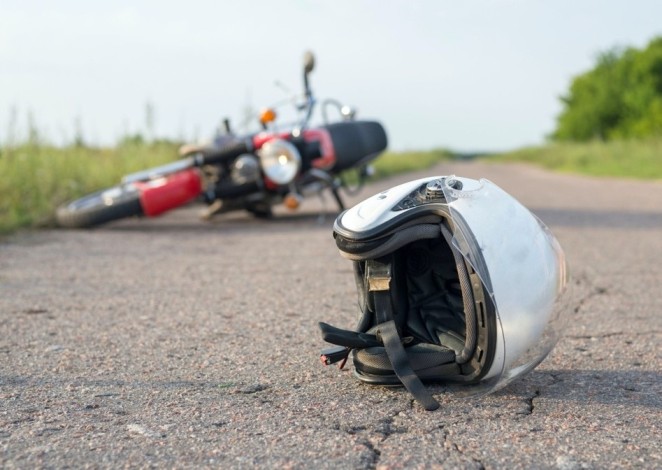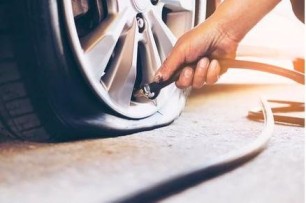General Insurance Blogs, Articles & Updates by - Magma HDI
Have us call you
- RENEW YOUR POLICY
- BUY NEW POLICY

Best tips on claiming a third-party two-wheeler insurance
In recent years, people often inquire about the mandatory two-wheeler insurance and the strict regulations and penalties if a vehicle doesn't comply with an insurance policy.
Third-party 2 wheeler insurance covers the loss incurred by the property of a third-party or third-party injury by your vehicle. The third-party plan also covers the compensation in case of the death of the third party person. This insurance does not provide you with the option of choosing add-ons, nor does it offer the cover for your own vehicle damage like in the Comprehensive Insurance Policy.
But, the premium here is comparatively lower than that of the Comprehensive Plan, which as the name itself suggests, is a wide range of overall insurance for your vehicle. Therefore, it is always advisable to opt for the Comprehensive Policy for more features and a wider coverage option, including the mandatory third-party 2 wheeler insurance.
Now, read below the stepwise guide on how to claim third-party 2 wheeler insurance. Consider a situation where damage to your two-wheeler is caused by another vehicle in an accident. To file a claim to your insurance agency towards the medical expenses and repair of the vehicle under third party insurance, you need to follow the given steps:
1. Take down the vehicle's details involved in the accident and of the vehicle owner
2. Try and click photographs of your damaged two-wheeler
3. Look around for any surveillance cameras or eye-witnesses and note down their contact details
4. File a First Investigation Report (FIR) at the nearest police station from the event site
5. Inform the insurance company about the incident and follow their instructions for further action
6. File a case with the Motor Accident Claims Tribunal Court with the help of a lawyer. Attend the court proceedings, inform the court of the actual occurring and submit all the required documents and details
7. Share the court's order with the insurer, and you will receive compensation for the expenses of the damage
8. Always remain truthful and honest on your part without hiding anything from the insurance company. You may invite trouble by making a false claim or if the fault is on your part
Documents required at the time of making a third-party 2 wheeler Insurance Claim:
1. Driving License
2. Registration Certificate (RC) of the vehicle
3. Insurance Policy Documentation
4. Pollution Under Control (PUC) Certificate
5. First Investigation Report (FIR) of the incident
6. Receipt or bill of any vehicle repair
7. Duly filled and signed claim form
8. Duly signed Satisfaction Voucher (SV) or Discharge Voucher (DV)
Do not become aggressive or angry at any time and remain calm. It will help you think of the next step more efficiently. Trust the 2 wheeler insurance and be patient throughout the process. But, do not delay in taking action and starting the process. Avoid agreeing upon any monetary settlements as they qualify to be illegal.
It is always better to be cautious than to claim insurance for damages. So drive carefully and follow all the safety measures!
APPLY FOR THE BEST THIRD-PARTY TWO-WHEELER INSURANCE FOR YOUR VEHICLE HERE…

Guide for transferring your bike registration number while relocating to another state
Relocating to another state appears to be a daunting task if you’re experiencing it for the first time. There are multiple things to take care of while planning a relocation. From packing stuff and moving to another state to adjusting to the changing environment can irk you badly.
What worries you the most is the transfer of your bike registration that needs to be thoroughly examined during the entire relocation process. You need to acquaint yourself with the registration process of the new state and accordingly schedule your timelines for the same. This is indeed a cumbersome task, but we are here with our guide to make this process a swift one before it turns out to be a daunting task.
1. New state, fresh registration:
There are two scenarios that you need to understand. First, if you are relocating for less than a year, you don’t need to transfer the RC. But, if you’re planning to settle in the new state for more than a year, then you will have to go through a transfer process. Initially, you need to visit the RTO near your area and get a No Objection Certificate (NOC) as clearance for your bike. Then, after transferring to the new state, you will have to apply for fresh registration of RC of your motorcycle in the RTO of the new state.
2. What documents to carry?
Following is the list of documents required for the re-registration process.
• Original copy of Previous Registration Certificate.
• Three copies of Form 28 or the NOC issued by your local state’s RTO.
• NOC obtained from the local police station.
• NOC from Traffic police personnel.
• Form 20 as the application for the registration of the motor vehicle.
• Form 27 as the application for the assignment of a new registration mark to the motor vehicle.
• Attested copy of address proof.
• Attested copy of valid insurance.
• Attested copy of the Pollution Under Control Certificate (PUC).
• Copy of PAN Card or Form 60 and 61
3. Visit the RTO of the new state and complete the re-registration:
Visit the local RTO at your new location with all the above documents and fill your application for re-registration. Carefully provide all the essential information and verify all the documents thoroughly before submitting them to the officials. Once you fill the form and submit all your documents, you’re through your bike registration in the new state.
4. Fill the new road tax challan followed by vehicle inspection:
After completing the registration process at the new RTO, you will be asked to pay the required fees for that state’s new road tax challan issued by the RTO. Make the payment and collect your challan. The next step is the inspection of your bike. An RTO officer will conduct an assessment of your vehicle to check the condition of your bike and its parts. The primary purpose of the inspection is to ensure that your bike qualifies all the general safety requirements. All the collected data is stored for future reference along with the imprint of the chassis number.
5. The last step, and it’s done!
After completing verification, if your RC gets approved, you will be allotted a date to visit the RTO and collect your new RC.
To sum it up, make your relocation process manageable by following our guide. Follow all the steps mindfully and without any delays. Importantly, complete the entire registration process before your NOC expires. Considering all these factors, it is also essential to inform your bike insurance provider about your relocation. Provide all the details to the insurance company to verify your case and compute the insurance premium for your bike.
Click HERE to get the details about bike insurance to satisfy your requirements.
Disclaimer: The information provided above is for illustrative purposes only. To get more details, please refer to policy wordings and prospectus before purchasing a policy.

Guide to change the tyre of your vehicle on your own
Imagine you are on a road trip, and suddenly you encounter a “flat tyre” situation. While you may think you should let a mechanic handle it, sometimes giving it a try on your own can be a much easier job to do. Changing the tyre is not challenging, nor does it need you to be “strong.” Just a few tips, and you are sorted to fix the issue all by yourself. In this blog, we have broken down the steps to learn how to change your tyre quickly!
Before you learn how to change the tyre, here’s something you should note:
Remember to keep a spare tyre in your car for emergencies. Moreover, pull over to a safe place and avoid parking on a slope or a dangerous road.
Furthermore, whenever you park, keep your parking lights on. This is crucial when it is dark so that the passing vehicles on the road will be aware of your car which reduces the chances of accident.
What are the tools you will need?
Before we begin with the steps, these are the tools you will need to change your vehicle’s tyre on your own.
● A spare tyre
● Carjack
● Lug wrench
● Wheel nut key
● Reflective jacket
● Car owner’s manual/handbook
Additional things you may need:
● Torch
● Gloves
● Warning triangle
● Wheel wedges
● Short plank of wood (optional)
Step-By-Step Guide to change your vehicle’s tyre on your own:
If you learn how to change your vehicle’s tyre once, you can easily do it whenever you need it next time.
Step 1: Pull over to a safe place and prepare for your tyre change. Pull the hand brakes and keep your vehicle in the first gear. Now, take out all the essential tools mentioned above. If you have an automatic car, put it in the “park” mode.
Note: If you have people sitting in your car, ask everyone to stand in a safe place. Avoid people sitting in your car until the tyre has been changed.
Step 2: Now, loosen all the nuts from the wheel by rotating them anti-clockwise. Note that you only need to loosen the nuts to a point where they are rotatable with your hand and NOT remove them altogether.
Step 3: If you are unaware of your car’s jack point, check out your car’s manual. Now, use your jack to uplift the vehicle. You can use the small wood of plank to keep the vehicle stable; this is crucial when the road is uneven. Raise the car 10-15 cms above the ground.
Step 4: Next step is to remove the loosened wheel nuts and remove the tyre using a cross-wrench.
Step 5: You can remove the dirt or rust in the vehicle hub and start placing your new tyre.
Step 6: Fit all the nuts into the tyre and tighten them with your hands.
Step 7: Use the jack to lower your car to the ground level again.
Step 8: Now, tighten the screws fully with the cross-wrench. Give a final check to the tightness and if needed, go to the nearby gas station to get the pressure level checked.
Take your punctured tyre for repair and later replace it with the spare one.
Since you know how to change the tyre of your vehicle, next time, you won't have to wait on a street for a mechanic or a passerby to come for your help. Besides learning the essential maintenance tips, it is also important to invest in the vehicle’s safety against heavy damages caused due to uninvited accidents. Buy motor insurance online and get useful coverage add-ons for your vehicle’s servicing and repair works.
Click HERE to buy motor insurance online.
Disclaimer: The information provided above is for illustrative purposes only. To get more details, please refer to policy wordings and prospectus before purchasing a policy.

Here are few essential life lessons that bike trips can teach us
If you get to have a conversation with a motorhead, you'll probably hear them say that the joy of riding a motorbike comes second to none. A feast for the senses, riding is exhilarating and comforting to motorcyclists. It fosters joy, excitement, thrill, and pleasure. When you ride, you feel liberated, and there is always something new to discover and learn when you're on the roads.
Life throws a lot of experiences at you while on a motorbike trip. You can learn a lot about yourself and others while you are steering your way through the places and covering distances. Bike trips are much more than fun. Such trips can be a great way to connect to your deeper self and unravel fresh experiences and valuable lessons that may change your perspective towards life.
Here are a few life lessons that you can learn when you set out for a bike trip.
1. You’re a tiny but important part of this world:
As a motorcyclist, you share the road with fellow riders. It’s important to respect each vehicle on the road. So, consider yourself important as your discipline makes a significant contribution on the road.
2. Life is too short:
We all have witnessed reckless drivers—cutting into lanes without proper signals, speeding in single lanes, and whatnot. Viewing any mishap or accident is a terrible experience during your long riding trip, but you realize how suddenly things can change. It makes you more careful and appreciative of everything as they are here and now.
3. Focus on your goal:
While driving a car, drivers often engage in distracting activities like adjusting the AC knob and tuning to a radio station. But when you're riding, it's just you, your bike, and the road. There are no distractions, and you just concentrate on the road in front. Likewise, we must focus on what is essential in life. Concentrate on the future and don’t allow minor inconveniences to detract you from your ambitions in life.
4. You learn to let go your ego:
As we said, we've all seen our fair share of terrible drivers. Sometimes you are triggered and obliged to accept the situation because you cannot confront every other vehicle on the road. You learn to swallow your ego and remain patient to handle things maturely. Staying calm and tackling problems with patience is not less than any winning formula to live happily.
5. Practice makes an individual perfect:
No one is born perfect, but we can ace any talent with positive intent and dedicated practice. Every ride you take fills you with new experiences and learnings that you can ponder and do better on your next ride. Consistency and a positive mindset are vital to master your fears and weaknesses.
When you are riding, relax your soul and enjoy the present moment. There's plenty to experience even in the most unlikely locations. Hop on the motorbike and discover life like never before. Like life, the roads are uncertain; but something certain is ensuring safety. This is yet another lesson that bike trips teach us; to be responsible for your safety and possessions. So, be responsible and purchase bike insurance for the additional protection of your bike. You may surf through multiple bike insurance online and buy the one that assures value for money.
Click HERE to get bike insurance online.
Disclaimer: The information provided above is for illustrative purposes only. To get more details, please refer to policy wordings and prospectus before purchasing a policy.


